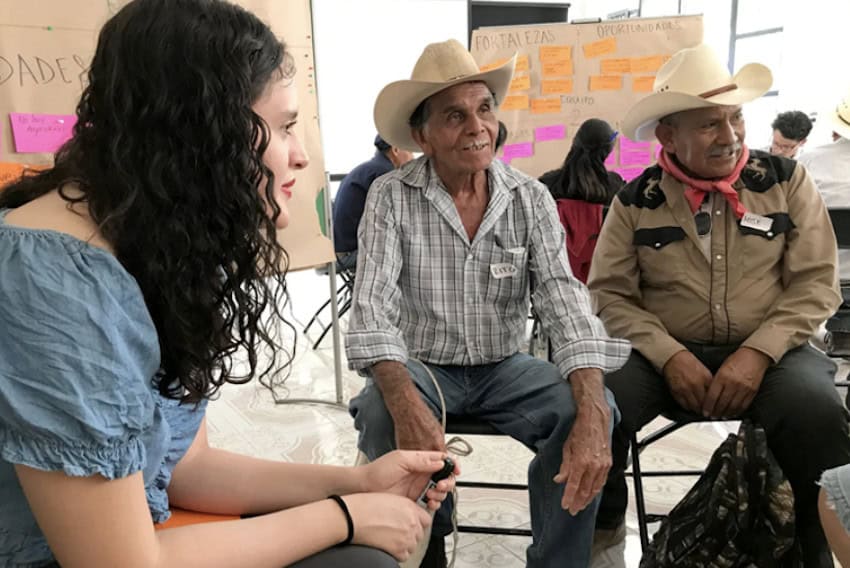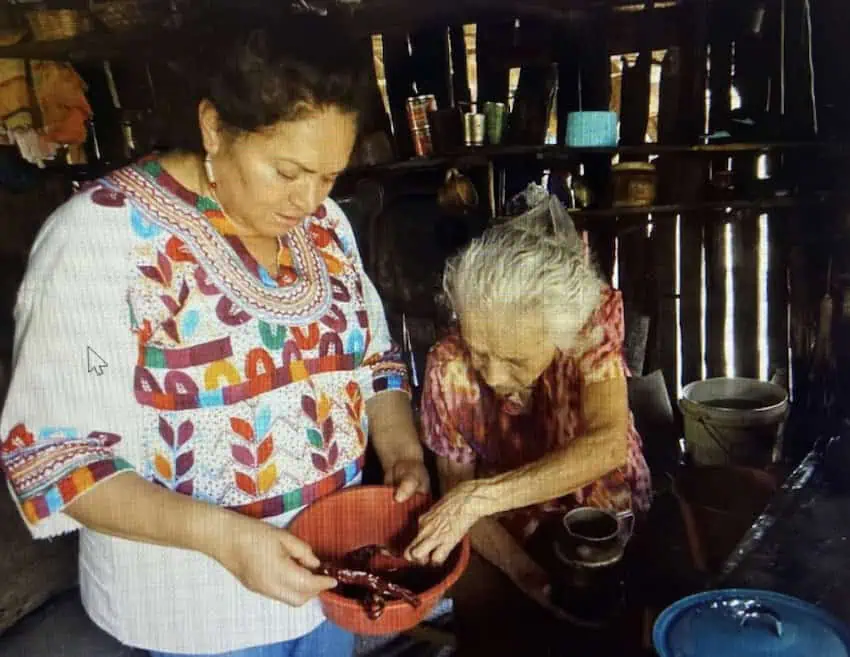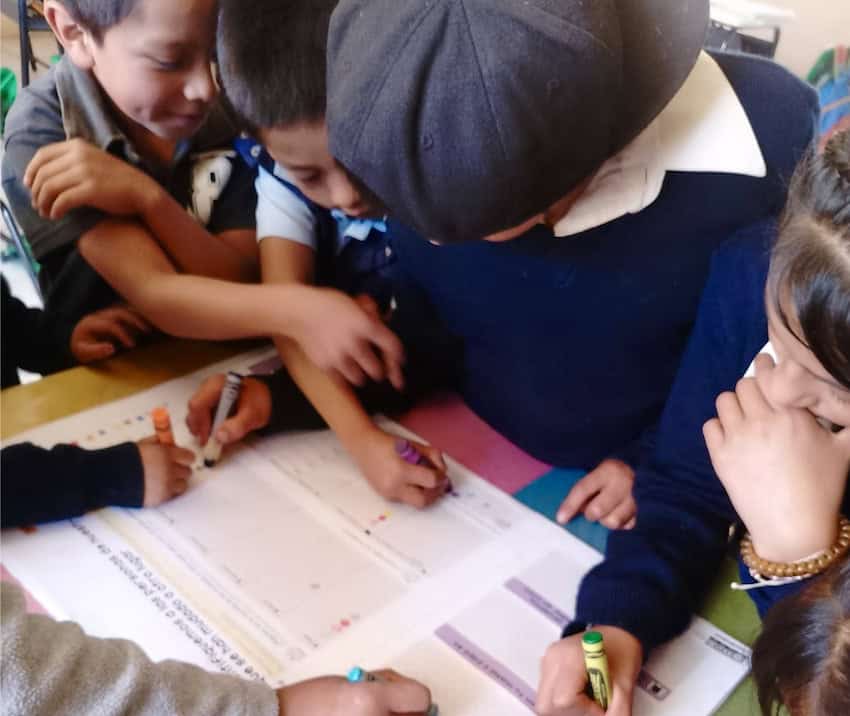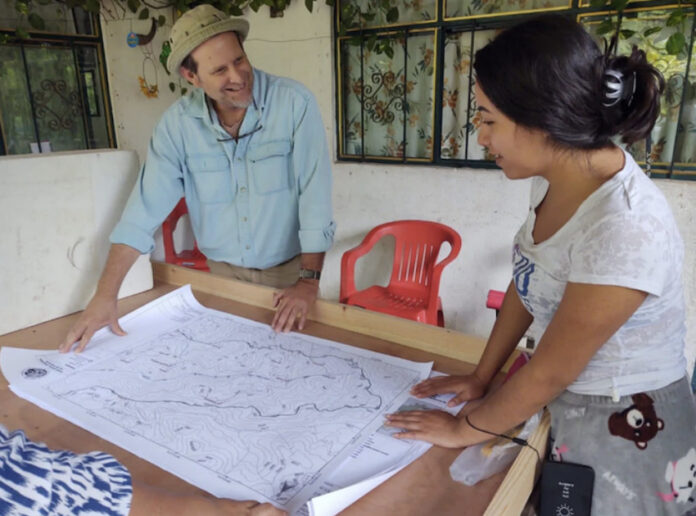Now celebrating its 15th anniversary, el Maíz Más Pequeño is an innovative nonprofit organization training teachers to prepare communities to adapt to climate change. Their educational programs promote the participation of young people, teachers, parents and communities as a whole.
“Our mission,” says director and cofounder Henry Miller, “is to do everything possible to prepare society for climate change. Over the last 15 years, we’ve worked with Indigenous communities throughout Mexico, collaborating with local, national and international organizations, including the UN Food and Agriculture Organization.”

“We’ve had the opportunity to develop an understanding of the problems facing children, parents and teachers, and with that understanding, we have created an educational model for climate change adaptation.”
The organization’s current initiative is called the Learning and Transition Laboratory for Climate Change (labAT). This educational tool helps teachers conduct community diagnostics, identify key problems, and develop school projects that address local circumstances.
“We have just completed our first full school year in the state of Querétaro,” explains Miller, “specifically in the Sierra Gorda region, where we work with teachers representing 26 schools in 26 communities.”
“This tool is designed to help teachers work with students and parents to identify community problems, risks and vulnerabilities, as well as areas of resilience and available resources. Teachers are then able to bring this hyper-local information into their lesson plans for the development of school projects that address these specific community situations.”
Think globally, act locally
While Miller affirms that the labAT educational model aligns with international standards such as the Paris Climate Accords, Sendai Framework for Disaster Risk Reduction and the UN Sustainable Development Goals, as well as Mexico’s national educational standards, he also stresses that centering local conditions is its strength.
“I want to underline the importance of local information for climate change adaptation. Our work aligns with the Paris Accords and the UN 2030 agenda, and these international frameworks are very important — but the key is that adaptation has to happen locally. People need options at the local level, they need access to knowledge, and they need access to power structures.”
The organization’s diagnostic and educational tool, which has received certification from Mexico’s National Copyright Institute (Indautor), focuses on three reference points: each family’s domestic economy; the community’s territory, such as the local watershed; and good governance.

Empowering educators and re-centering them as community leaders
El Maíz Más Pequeño aims to support and empower teachers, re-centering them as community leaders and sources of information and resources. “We definitely want to contribute to strengthening teachers,” says Henry Miller. “We remind them that they can be agents of change and that they are not alone.”
“Along those lines,” he continues, “our tool has an element of social cartography: we begin by asking students to draw their community, putting the school in the center as the information source. Then we ask them to note places or elements of their community that are considered resources and others that are considered dangerous or risky.”
Miller described seeing mosquitos drawn for the first time, and marked as a risk, on the community map created by a group of primary school students in the remote village of La Barranca in Pinal de Amoles, Querétaro. This community is located at such a high elevation that they’d never had to worry about mosquitos before. “But because of climate change, they’re now dealing with mosquitoes, a biological indicator showing that temperatures are warming. The increase in mosquitos in many areas has led to more outbreaks of dengue fever all over the country.”
These children and their parents also identified forest fires, illegal logging and violence as threats to their community. Not only do these diagnostic exercises provide critical information, they also develop a language with which to talk about the problems, as well as uncover knowledge of actors who can help.
In today’s world, parents have less certainty about the future their children will face, notes Miller. “We no longer have the luxury of certainty, so we have to build resilience, in the form of knowledge, emotional intelligence and the ability to work with other local actors for the common benefit.”
The organization then helps teachers systematize their integration of climate change adaptation content into their lesson plans by defining climate-related vulnerabilities and sources of resilience in each layer of the community: at the level of a family’s domestic economy, in the physical territory and in government. “We exist to bring climate change into the national curriculum in a user-friendly way,” Miller says.

Building networks to support climate change adaptations
By working with parents of students in each school, El Maíz Más Pequeño aims to improve the quality of information available to community members, support healthy community decision-making and identify and expand networks of actors working to support climate change adaptation projects.
Miller explained that the organization also hopes to contribute to a critical national risk management atlas, working with the National Institute for Ecology and Climate Change (INECC) and Civil Protection. This initiative aims to improve the quality of information available to national policymakers as well as local actors, enhancing the national government’s ability to prepare citizens for climate change adaptations.
“Climate change adaptation is a form of risk management,” Miller says. ”It is crucial to reduce the time needed to respond to local climate-related problems and bring better tools to the fight.”
Support the innovative work of El Maíz Más Pequeño
Now celebrating its 15th anniversary, the organization hopes to greatly expand their reach in the coming years. In particular they plan to digitize their educational tools as an application and thereby make these valuable resources more accessible to teachers, parents, students and community leaders across the country. They are currently looking for corporate support to make this possible. To learn more about El Maíz Más Pequeño and support the organization’s important work, visit elmaizmaspequeno.org.
Based in San Miguel de Allende, Ann Marie Jackson is a writer and NGO leader who previously worked for the U.S. Department of State. Her award-winning novel “The Broken Hummingbird,” which is set in San Miguel de Allende, came out in October 2023. Ann Marie can be reached through her website, annmariejacksonauthor.com.
